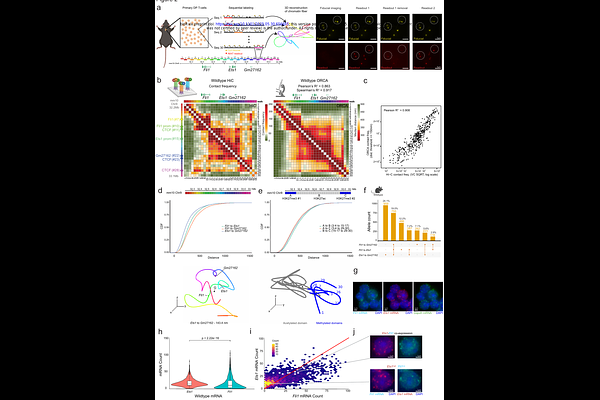Single-Allele Chromatin Tracing Reveals Genomic Clustering of Paralogous Transcription Factors as a Mechanism for Developmental Robustness in T Cells

Single-Allele Chromatin Tracing Reveals Genomic Clustering of Paralogous Transcription Factors as a Mechanism for Developmental Robustness in T Cells
Jay, A.; Zhou, Y.; Yoon, S.; Abeje, B.; Chandra, A.; Wald, J.; Raj, A.; Faryabi, R.; Vahedi, G.
AbstractIn metazoans, gene duplication has given rise to paralogous transcription factors, which have functionally diversified to control cellular differentiation. While the majority of paralogous TFs are dispersed across different chromosomes, some remain clustered raising the question of whether genomic proximity confers any evolutionary advantage for TF clusters. To address this, we investigated a ~1 Mbp locus containing two ETS family paralogs, Ets1 and Fli1. Using a sub-diffraction sequential imaging technique called Optical Reconstruction of Chromatin Architecture (ORCA), we traced the 3D organization of this region in single alleles of T cells from genetically engineered mice with targeted deletions of key regulatory elements. In wild-type T cells, the predominant chromatin conformation spatially links Ets1 to its proximal super-enhancer, segregating Ets1 from Fli1. This topology correlates with high Ets1 and low Fli1 expression. Deletion of the Ets1 super-enhancer abolishes this configuration, triggering locus-wide architectural rewiring that increases Ets1-Fli1 promoter-promoter interactions and subsequently the co-expression of two genes within individual cells. Remarkably, this compensatory interaction bypasses insulated chromatin domains, sustaining Ets1 levels necessary for T cell development despite enhancer loss. Our results reveal that genomic clustering of TF paralogs enables dynamic architectural plasticity: while a super-enhancer fine-tunes paralog expression balance in wild-type contexts, its deletion unmasks latent promoter-driven coordination, suggesting that proximity safeguards functional redundancy and transcriptional resilience critical for cellular fitness.